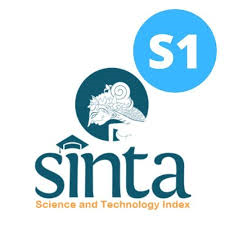TRICHOMES MORPHOLOGY ON PETALS OF SOME ACANTHACEAE SPECIES
Abstract
A preliminary taxonomic study was carried out on seven Acanthaceae species namely as Andrographis paniculata,Pseuderanthemum graciliflorum,P. carruthersii, Asystasia gangetica ssp. micrantha, Ruellia repens, Justicia comata and J. betonica.The study was undertaken to investigate the morphology of trichomes present on the surfaces of flower petal. The variations found in this study are in their types and density. Based on observation, two forms of trichomes are present in all species studies which are glandular and non-glandular trichomes. There are seven types of trichomes found in this study. Trichomes types are shown to have systematic significance that can be used to differentiate and identify certain Acanthaceae species studied.
Keywords
Full Text:
PDFReferences
AMALIA, R., NORAINI, T., JALIFAH, L., RUZI, A. R. & IDRIS, S. 2013. Morphology of trichomes in Pogostemon cablin Benth. (Lamiaceae). Australian Journal of Crop Science 7(6): 744–749.
ASCENSÂO, L., MARQUES, N. & PAIS, M. S. 1996. Glandular trichomes on vegetative and reproductive organs of Leonotis leonurus (Lamiaceae). Annals of Botany 75: 619–626.
BORG, A. J. 2008. Phylogenetics and floral structure in Thunbergioideae and Avicennia (Acanthaceae). Licentiate Thesis in Systematic Botany. Department of Botany. Stockholm University [Unpublished Research Article].
BORG, A. J. & SCHONENBERGER, J. 2011. Comparative floral development and structure of the black mangrove genus Avicennia L. and related taxa in the Acanthaceae. International Journal of Plant Sciences 172: 330–344.
CUTLER, D. F., BOTHA, T. & STEVENSON, D. W. 2008. Plant anatomy: an applied approach. Blackwell Publishing. United Kingdom.
GRANT, W. F. 1955. A cytogenetic study in the Acanthaceae. Brittonia 8(2): 121–149.
HARDIN, J. W. 1979. Atlas of foliar surface features in woody plants, I. Vesture and trichome types of eastern North America. Quercus Bulletin Torrey Botany. Club 106: 313-325.
JOHANSEN, D. A. 1940. Plant Microtechnique. Pp. 97. New York: McGraw-Hill Book Company Inc.
JOHNSON, H. B. 1975. Plant pubescence: an ecological perspective. Botanical Review 41: 233–253.
KIM, H. J., SEO, E.Y., KIM, J. H., CHEONG, H. J., KANG, B. C., & CHOI, D. I. 2012. Morphological classification of trichomes associated with possible biotic stress resistance in the genus Capsicum. The Plant Pathology Journal 28(1): 107–113.
MCDADE, L. A., DANIEL, T. F. & KIEL, C. A. 2008. Toward a comprehensive understanding of phylogenetic relationships among lineages of Acanthaceae S. L. (Lamiales). American Journal of Botany 95(9): 1136–1152.
METCALFE, C. R. 1960. Anatomy of the monocotyledons: I. Graminae. Clarendon Press, Oxford. UK.
NAVARRO, T. AND EL OUALIDI, J. 2000. Trichome morphology in Teucrim L. (Labiatae). A taxonomic review. Anales Jardin Botanico De Madrid 57(2): 277–297.
RAO, S. R. S. AND RAMAYANA, N. 1977. Structure distribution and taxonomic importance of trichomes in the Indian species of Malvastrum. Phytomorphology. 27: 40–44.
SASS, J. E. 1958. Botanical Microtechnique. 3rd. ed. Pp. 78. Lowa: State University Press.
SINGH, V. & JAIN, D. K. 1975. Trichomes in Acanthaceae. I. General structure. Journal of Indian Botanical Society. 54: 116–127.
SPRING, O. 2000. Chemotaxonomy based on metabolites from glandular trichomes. Advances in Botanical Research 31: 153-174.
WAGNER, G. J., WANG, E. & SHEPHERD, R. W. 2004. New approaches for studying and exploiting an old protuberance, the plant trichome. Annals of Botany 93: 3–11.
WERKER, E. 1993. Function of essential oil secreting glandular hairs in aromatic plants of Lamiaceae-a review. Flavour and Fragrance Journal 8: 249–255.
WERKER, E. 2000. Trichome diversity and development. In: Hallahan DL and Gray JS 9eds), Advances in Botanical Research. 31: 1–35.
Refbacks
- There are currently no refbacks.









